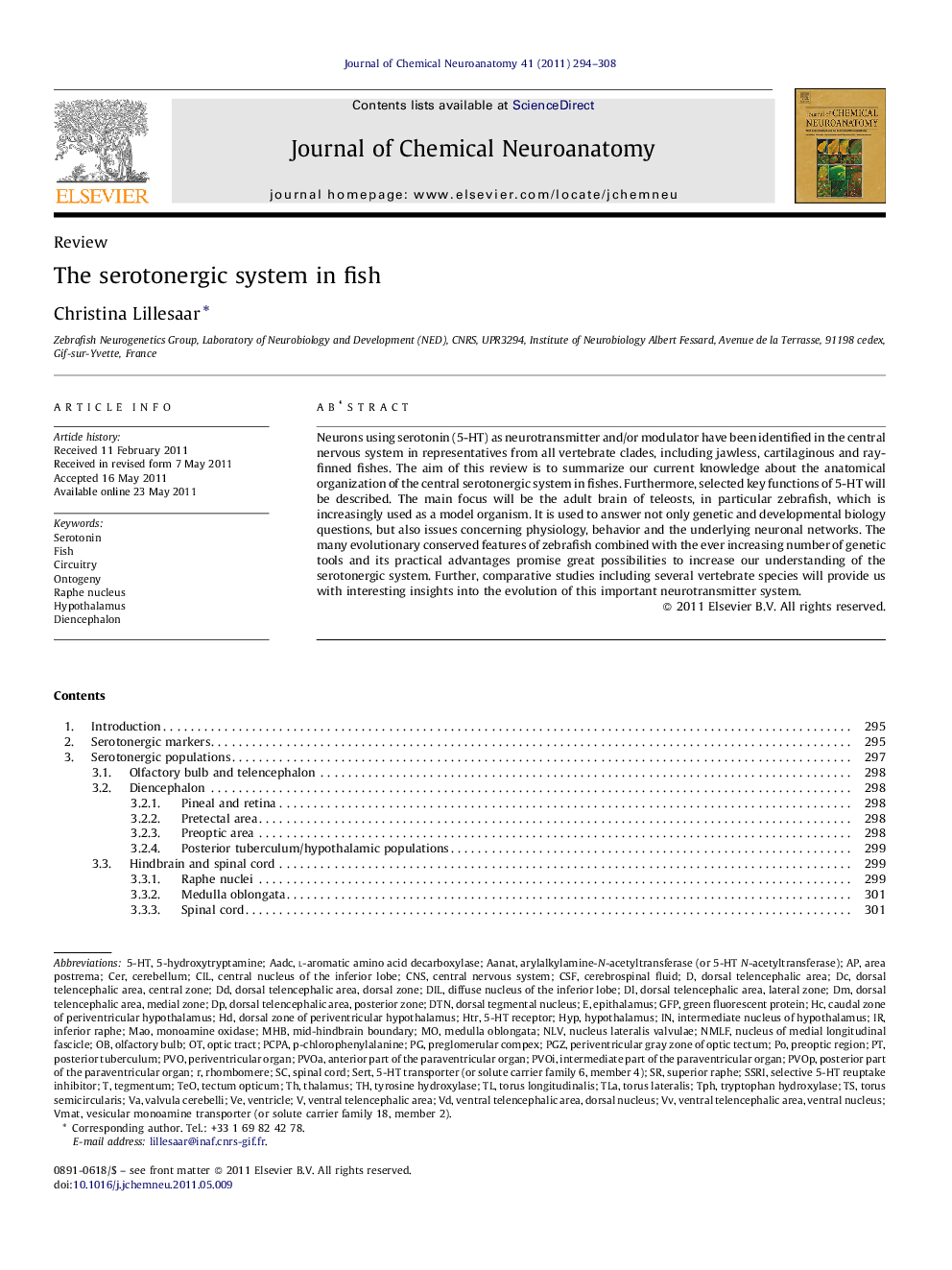| Article ID | Journal | Published Year | Pages | File Type |
|---|---|---|---|---|
| 1989067 | Journal of Chemical Neuroanatomy | 2011 | 15 Pages |
Neurons using serotonin (5-HT) as neurotransmitter and/or modulator have been identified in the central nervous system in representatives from all vertebrate clades, including jawless, cartilaginous and ray-finned fishes. The aim of this review is to summarize our current knowledge about the anatomical organization of the central serotonergic system in fishes. Furthermore, selected key functions of 5-HT will be described. The main focus will be the adult brain of teleosts, in particular zebrafish, which is increasingly used as a model organism. It is used to answer not only genetic and developmental biology questions, but also issues concerning physiology, behavior and the underlying neuronal networks. The many evolutionary conserved features of zebrafish combined with the ever increasing number of genetic tools and its practical advantages promise great possibilities to increase our understanding of the serotonergic system. Further, comparative studies including several vertebrate species will provide us with interesting insights into the evolution of this important neurotransmitter system.
► 5-HT neurons are present in the CNS of representatives from all fish clades. ► Fish have multiple 5-HT populations in the forebrain, hindbrain and spinal cord. ► 5-HT influences locomotion, aggression and fear in fish. ► Genetic tools to manipulate 5-HT function are available.
